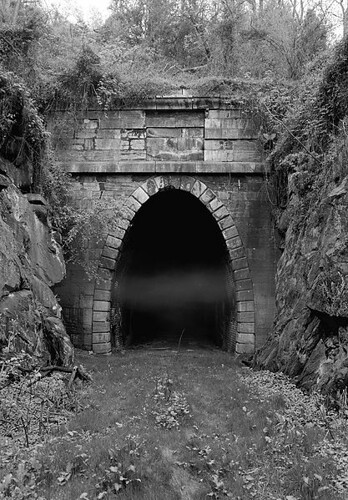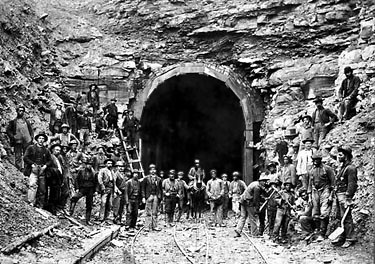
Claudius Crozet's Original Blue Ridge Tunnel. Library of Congress Image.
More than 150 years ago about 2,000 Irish immigrants changed the face of Augusta County. For eight years they joined with over 100 African-American slaves and, by hand, dug 4,262 feet through the rock of Afton Mountain to built a railroad tunnel. When they were finished in the 1850s, Richmond was connected by railroad to Staunton and Nelson County and Augusta County were connected underneath the mountain by the same rock tunnel. Some of those Irish who constructed this engineering marvel stayed in the Valley where they built a church—St. Francis Catholic Church—as well as homes, and businesses.
On Sunday, Nov. 6 at 3 p.m. the story of those Irish, the African Americans, and the tunnel they built will be the topic presented at the Augusta County Historical Society’s Fall Meeting. The event will be held in downtown Staunton at St. Francis Catholic Church’s Parish Hall. Parking is available on Augusta Street and off of New Street where handicapped spaces are available. The event is free and open to the public. A short history of St. Francis will precede the main program. The event is free and open to the public.
Several members of the group Clann Mhór will present the program. Clann Mhór started as a research group dealing with the construction of the original Blue Ridge Railroad line that ran the 17 miles from the Mechum's River (near Ivy, Va.) up through the mountains to the South River in Waynesboro. They have evolved to include the continuation of the railroad construction further west to Staunton and Clifton Forge. Key to understanding the railroad history of the region is learning about the Irish workers hired to construct the line. Researchers with Clann Mhór, which means Great Family in Gaelic, have collected the names of over 1,900 Irish workers and their families and 100 slaves associated with the railroad. At least 941of the workers were native Irish coming mainly from the counties of Cork, Kerry, and Limerick. The men building the tunnel by hand worked six days a week, for about one dollar a day.
Using records from the C&O Historical Society, Thornrose Cemetery, and early Staunton newspapers, as well as Augusta County Courthouse records including marriages, deaths, citizenship applications, and census records, Clann Mhór has created a rich picture of the lives of the railroad workers. Included in the presentation will be the story of the infamous Father Daniel Downey of St. Francis.
A reception will follow the program and question and answer season. One of the presenters will also have copies of her books for young readers (Feed the Children First: Irish Memories of the Great Hunter and Knockabeg: A Famine Tale) for sale. Check the ACHS website (http://www.augustacountyhs.org/) for more information about the Fall Meeting or contact ACHS at augustachs@ntelos.net or 540-248-4151. ht/Lynn

This 19th century photo of the tunnel and the workers was taken on the western, Augusta County, side of the tunnel. Today the original tunnel awaits restoration into a regional greenway open to walkers and cyclists. Trains still pass through the mountain by way of a newer tunnel constructed in 1942 [1.]




No comments:
Post a Comment